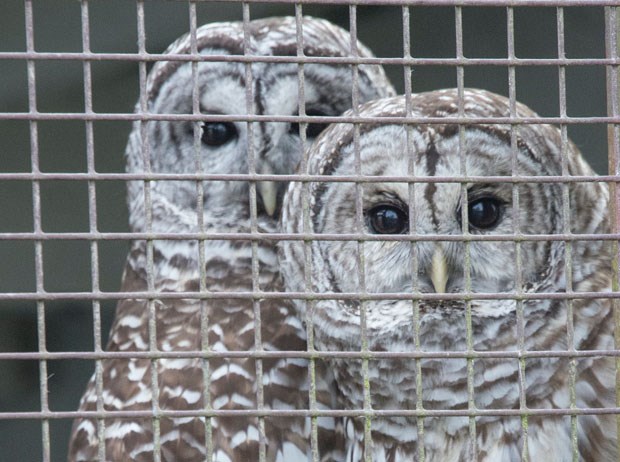Owls are dying of suspected poisoning at an alarming rate, according to the provincial Ministry of Agriculture.
Ministry spokesperson Dave Townsend said five owls were submitted to B.C.’s Animal Health Centre from October 2017 to January 2018 that had traces of anticoagulant rodenticides in the liver.
Two owls were submitted from North Vancouver, one from Stanley Park and two from Greater Victoria. A sixth owl, the Optimist has learned, died of poisoning in South Surrey in December but was not submitted to the ministry for testing.
Townsend could not provide comment as to the sudden increase in owl poisoning cases.
Ladner-based Orphaned Wildlife Rehabilitation Society (OWL) has been caring for other owls impacted by poison.
Raptor care supervisor Martina Versteeg said they had another suspected case of secondary poison in a barred owl on Monday.
“One reason we were seeing more cases is because rats are being driven out of natural areas by construction destroying nesting and food sources, cold weather pushes them closer to human shelters for warmth and food,” she said. “An ongoing issue is people are reluctant to clean up the outside bushes, unused woodpiles, and are unwilling to close up access points to the home because they think using poison is a quicker action, when in reality it is not. Block the access, remove the food that is drawing them in and the rats will have to move on.”
Versteeg said a huge misconception is that rodent poison will not harm cats, dogs or wildlife.
“This is not true, poison is poison,” she said. “When the rat or mouse eats a piece of poison they are able to pull it out of the bait box, leaving it on the ground or they get sick out in the open and die anywhere from two to three days. This makes them easy prey for owls, hawks, eagles, coyotes, dogs and cats, who then can get secondary poisoned by the residues in the rodent’s body. The poison can make predators ill and more susceptible to other injuries, or can outright kill them.
“There are many ‘green’ labeled pest control companies who falsely claim a more humane option but actually use the same high potency poison as other commercial pest control applicators.”
Versteeg suggests alternative traps instead of poison control such as live traps, bucket traps, covered mechanical traps, fox or coyote urine, or low frequency noise emitters.
Sticky traps can also harm non-target wildlife and pets and are not a suggested option.
For more information on what to do to control a possible rodent problem see: www.raptorsarethesolution.org, www.barnowlsbc.ca/raptor-rodenticide-project.html or www.saferodentcontrol.org.



